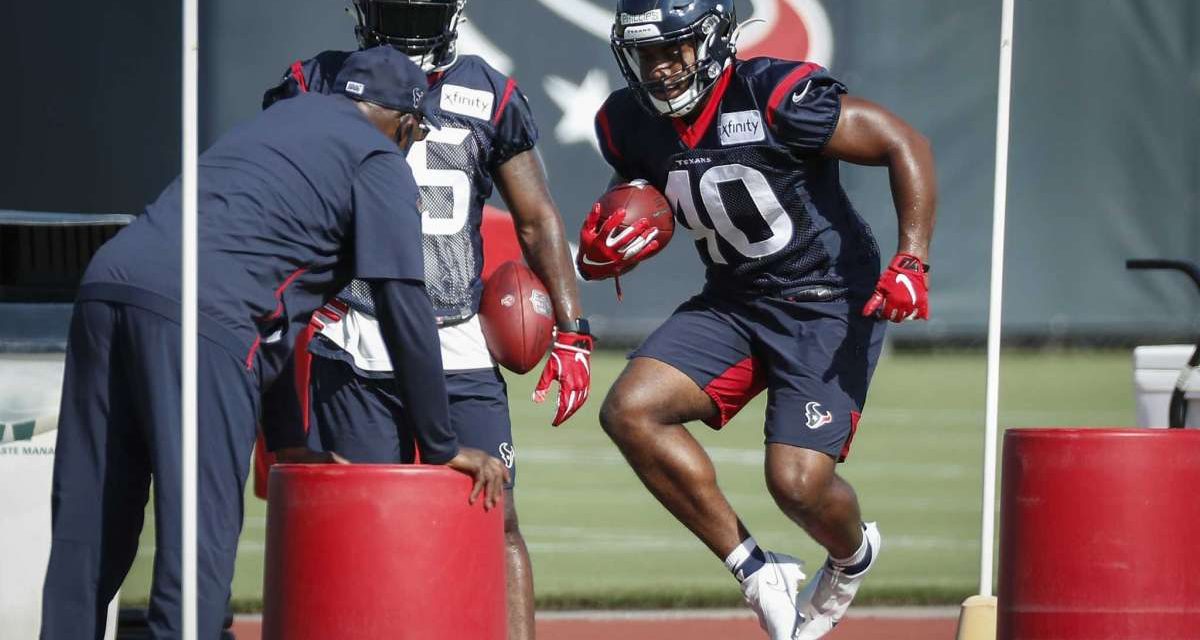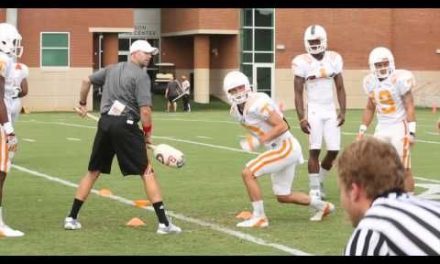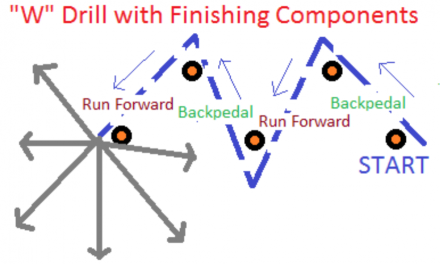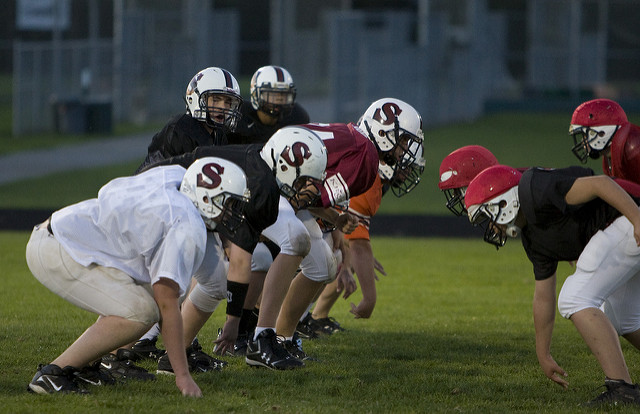I am frequently asked questions about the drills we do within our program, or to write an article about drills coaches can use to improve their position group. I can recall being in the same boat, because as a young coach I did not have enough tools in my toolbox to fill-out a practice plan. I also did not want to hear my players complaining about doing the same drills each day. What I have learned since that time, is that my problem did not lie within my experience or the lack of a massive drill package. The problem was that I was not correctly looking at how to coach my players to play the position and do the jobs they were asked to do. Since I came to this realization, I have never again been concerned with having enough or good enough drills for my position group.
The answers to everybody’s drill questions, no matter what type they are, lie within one question you need to ask yourself. That question is, “what exactly am I going to be asking my players to do next season?”
CORE SKILLS
In our program, we refer to these as our core skills. Our core skills are all of the movements, blocks, releases, routes, and techniques that we expect our kids to do to be successful within our offense. Before determining what drills you are going to use, you must first know what the players are going to do. Jason Hahnstadt wrote a great article about wide receiver drills and what not to do. This article is great, because it forces receiver coaches to think about why you are doing what you are doing, and for our offensive coaches, our core skills document does the same thing. We so often use drills we see at clinics, or the drills that our coaches did with us. But the offense we ran in the early 1990s was nothing like what we do today, and therefore, some of those drills are out of date. Not to mention the fact that kinesiology is always evolving, so the movements that were taught years ago are no longer seen as best practice in terms of optimal strength, speed and explosion.
WHY TEACH CORE SKILLS?
Creating an exhaustive list of core skills seems like a daunting task for many coaches, but it must be done for optimal performance for your players. It’s this simple….if your players do not practice the skill, you cannot expect them to perform that skill well enough to defeat their opponent. And if the list is not created, core skills will be missed, and therefore never practiced.
Once the kids are taught the movement through a drill, you can then no longer blame them for making mistakes, which is a great thing!! You will know very soon if a player is capable of playing the position by how they perform the core skill. If you see they cannot perform that core skill, do not blame the player for not being able to do it. You either have that player out of position within your scheme, or he is not capable of performing that during high-level competition.
CORE SKILLS DOCUMENT
Our core skills document is simply a Google Spreadsheet with tabs for each position. I ask my coaches to go through each of the plays in the playbook, and write down what their player(s) will be doing during that play. From there, like I mentioned above, we can create an exhaustive list of movements, blocks, releases, routes, and techniques that we expect our kids to do to be successful within our offense. The first time a list like this is created, it can seem daunting, but you will soon realize that many of the skills are similar, and can be mastered using the same drills. Within the Google Spreadsheet, the columns are skill, technique and drill. That’s it! You can also have a fourth column for links if you find drills you like online. This ensures that during the season your are working on the skill the way you chose to do it in the off-season.
POSITIVES OF CREATING AN EXHAUSTIVE LIST
I imagine your first thought of creating an exhaustive list of movements leads to an eye-roll. That being said, I strongly urge you to create this list for your position group. Or, if you are a coordinator, ask your coaches to create their own list. There are many positives of this, which include:
Educating the coaches: a position coach is not always going to be as committed to perfection as you are, and therefore may not be completely educated on everything his players must do. This exercise gives the assistants the chance to see exactly what their players will be doing prior to installation, so they can be prepared to teach every aspect of every play.
Documenting skills and techniques: over the years of running the same offense, or even if you change offenses, some skills will translate. Once you create this document, it does not need to be created again, only updated from year-to-year.
Helping you find and create drills: once you realize the movements you are tasked to teach your players, finding and creating drills becomes much easier. You no longer need to go to a clinic or use Google to find the drills you need. You can see within the structure of the play what your player needs to do, and can create or find a drill to suit that movement. Every drill was created by someone. Why can’t you be the next innovator?
Improving practice plans: for coaches that are having issues finding things to do during individual periods, the core skills sheet is the best place to find something not only to do, but something essential to improvement. Create a list each weekend of the skills your players were unsuccessful in performing, and find the drill within the spreadsheet that falls under that skill. On a similar note, it creates a great drill order for the beginning of the season. Checkout your install order, and that tells you exactly what skills you should begin teaching your players on day one. Tying installation of core skills with installation of base plays is a great way to teach the entire play to the kids.
Bringing clarity to the entire offense: when kids and coaches do not have complete clarity, they have no other option but to fill-in the rest with what they think is best. The problem with that is they do not know what is best, so we get mad at them for doing it wrong. Make sure when you are creating your core skill list, that you are not only creating the list, but also the HOW & THE WHY! Kids want to know this, and if they do, they will have no other questions for you. If they have the answer to the how and the why, they will do it your way and not care about doing the same drills over and over. They will understand all aspects of the skill you are teaching them, and know that doing this drill numerous times is going to ensure they improve upon it for the next game.
CONCLUSION
Introducing this exercise to your coaches is a simple way to put yourself on a path to more wins. Players win games, and the team that wins the most plays usually wins the game. Perfecting every skill that will be used is paramount to optimal performance. You will not regret it.






Coding is not a necessary skill in data visualization and analysis in this article, we will show you the Best No Code Tools that are easy to use, have great graphic designs and contain more features to make your visualization sophisticated.
Read More: https://ppcexpo.com/blog/best-no-code-tools